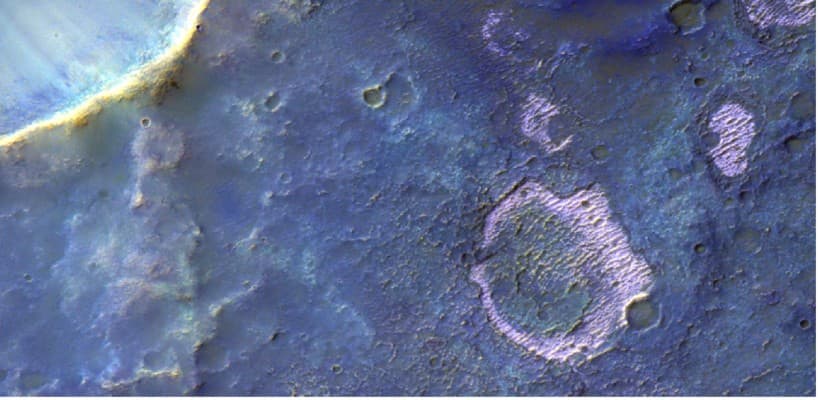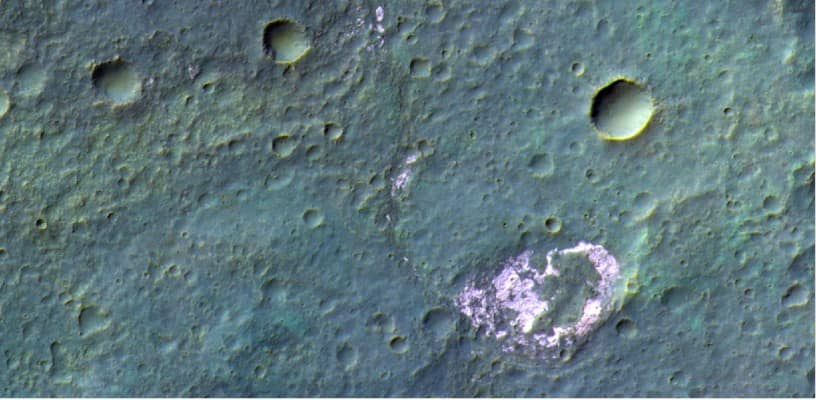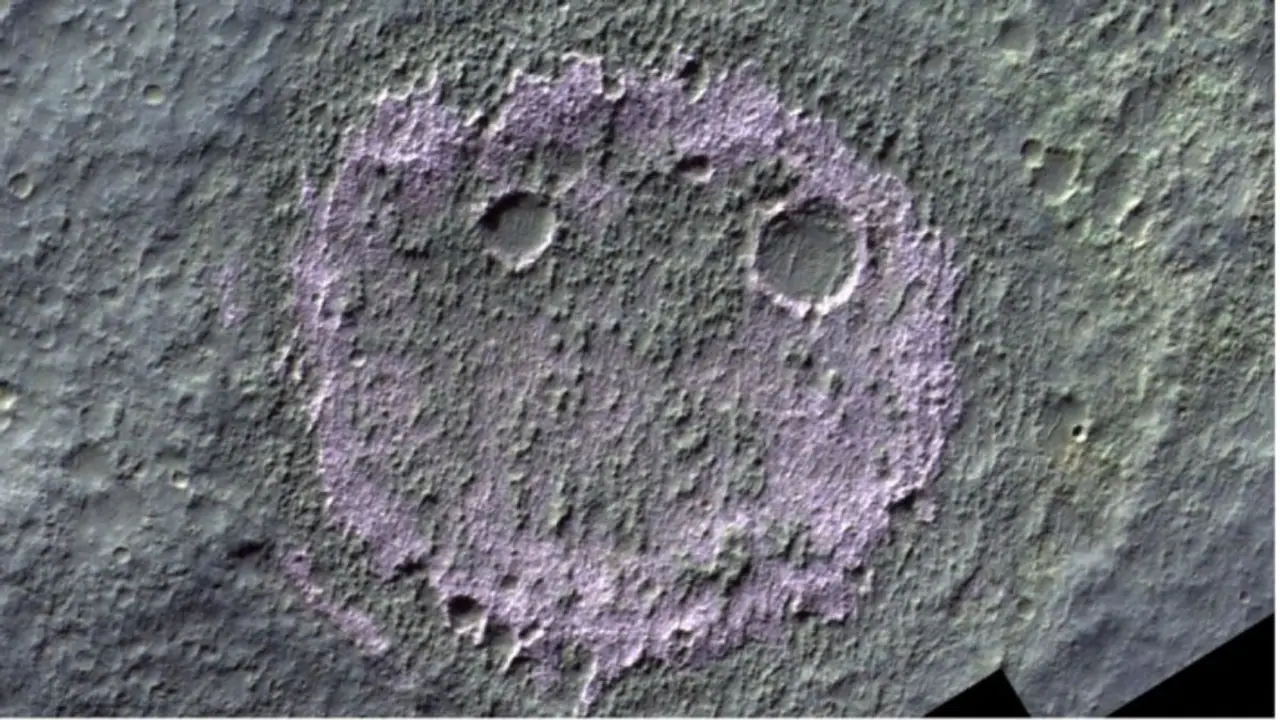In a groundbreaking discovery, astronomers recently identified a smiley-face-shaped structure on Mars that may offer new clues about the Red Planet's ancient climate and the potential for life.
(Image credit: European Space Agency/TGO/CaSSIS)

In a groundbreaking discovery, astronomers recently identified a smiley-face-shaped structure on Mars that may offer new clues about the Red Planet's ancient climate and the potential for life. Captured by the European Space Agency’s (ESA) ExoMars Trace Gas Orbiter, this intriguing formation consists of two crater "eyes" and rings of ancient salt deposits, which scientists believe are the remnants of a long-dried body of water. The discovery was published in the journal Scientific Data as part of a broader study cataloging nearly 1,000 salt deposits scattered across Mars.
A smiley face with scientific significance
What initially appeared to be a planetary quirk might actually be one of the most significant discoveries in the ongoing search for signs of life on Mars. The smiley-face formation, visible only through infrared imaging, may be a marker of ancient habitable zones on the Red Planet. According to ESA scientists, the salt deposits that make up the grinning face are remnants of water bodies that existed billions of years ago. These deposits, largely composed of chloride, suggest that Mars once hosted liquid water—potentially creating environments suitable for microbial life.
"These deposits, remnants of ancient water bodies, could indicate habitable zones from billions of years ago," the ESA said in a statement.
While the exact size of the smiley-face structure remains undetermined, it is one of 965 salt deposits recently cataloged by the research team. These deposits range in size from 1,000 to 10,000 feet wide, further confirming the vast presence of ancient water systems on the planet.

(Traces of chloride salt deposits on Mars. Image Credits: ESA/TGO/CaSSIS)
Salt deposits: A window into Mars' watery past
Salt deposits are formed when bodies of water evaporate, leaving behind accumulations of salt—specifically chloride. On Mars, these deposits provide essential evidence of the planet's wetter, more temperate past. Scientists estimate that Mars underwent a major climatic shift between two and three billion years ago, likely triggered by the loss of its magnetic field. Without this protective field, solar wind eroded Mars’ atmosphere, leading to the freezing, evaporation, or entrapment of the planet’s liquid water.
Before Mars’ water bodies dried up, they may have been a haven for microbial life. The salt deposits, including those in the smiley-face formation, could still harbor the preserved remains of ancient microbes that once thrived in the planet's now-extinct lakes. ESA researchers believe these deposits are key to unlocking Mars’ past climate and understanding whether the planet was once home to life.
"The new data has important implications for our understanding of the distribution of water on early Mars, as well as its past climate and habitability," said Valentin Bickel, planetary scientist and lead author of the study, in an ESA statement.

(A salty pond on Terra Sirenum. Image Credits: ESA/TGO/CaSSIS)
Capturing Mars in infrared
The smiley-face structure, and others like it, are invisible to the naked eye. The ESA's ExoMars Trace Gas Orbiter, launched in 2016, used infrared cameras to detect the salt deposits, which appear as glowing pink or violet marks on the planet's surface. These infrared images have revealed a wealth of information about Mars' geological history and the distribution of ancient water bodies.
The orbiter has also been measuring methane and other gases in Mars’ atmosphere to understand potential biological or geological activity on the planet. Methane is particularly significant, as its presence could be a sign of microbial life—either ancient or still existing today. Though no conclusive evidence of life has been found, these latest findings are fueling optimism among scientists.
A new Martian catalog
The University of Bern in Sweden led the research team that compiled the most comprehensive catalog of Mars' chloride salt deposits to date. Using the ExoMars Orbiter’s infrared images, the team identified nearly 1,000 salt deposits across the planet's surface, providing crucial insights into Mars' ancient water systems.
These deposits paint a picture of a Mars that was once strikingly different from the barren, red desert we know today. Billions of years ago, Mars had rivers, lakes, and even deltas—landforms that water carved into the planet's surface. "In the distant past, water formed magnificent landforms such as riverbeds, channels, and deltas on the Red Planet," Bickel explained.

(Mermaid on Mars. Traces of chloride salt deposits on Mars. Image Credits: ESA/TGO/CaSSIS)
Searching for ancient life
While scientists have long theorized that Mars once had the conditions necessary for life, this discovery adds to a growing body of evidence suggesting that microbial life may have existed on the planet billions of years ago. The salt deposits, especially those in formations like the smiley-face, could still harbor the remains of these ancient organisms.
The study highlights the importance of continuing to explore Mars for signs of past or present life. With future missions to Mars, including NASA's Perseverance rover and the upcoming ESA-Roscosmos ExoMars mission, scientists are getting closer to answering the age-old question: Was Mars ever home to life?
Though the discovery of the smiley-face structure is a compelling step forward, much work remains to be done to unravel the mysteries of Mars. The catalog of salt deposits provides a roadmap for future exploration, offering clues about where scientists might look next for signs of ancient life.
As Bickel and his team continue to analyze the data, the hope is that these salt formations will lead to breakthroughs in understanding not only Mars' past, but also its potential to host life—perhaps even today, hidden in the subsurface or in ancient salt deposits waiting to be studied.
